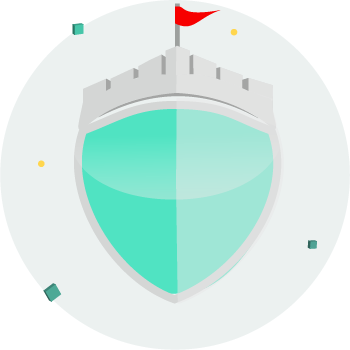Methods used to hack a professional's webcam

In this article we will talk in more detail about the processes used to infect computers in order to be able to hack a professional's webcam.Although some of the methods are similar for private individuals and professionals, the computer equipment and the context are different. This opens the way to other types of attacks.
Employees and managers: prime targets
For the hacker, the human factor is never left out, it is even often well known as vulnerable. The more employees there are, the more likely the attacks are to succeed.Their methods remain very similar to those mentioned in the "Individuals" section.Indeed, companies and more precisely employees (of all statuses) are regularly confronted with spam and malicious e-mails.The particularity of the corporate context is that hackers can use very ingenious scenarios so that employees end up opening the malicious attachment or visiting the compromised website.To cite one scenario, using visible company information gathered from the Internet, hackers can send an email, with one of the sales managers as the sender, to one of the internal accounting managers in order to urgently validate an attached quote for a large deal.The accounting department opens the attachment and thus unwittingly executes the virus that will later allow the hacker to enter the company's internal network.Another equally effective scenario can be to use the company's business applications to target employees.Some companies receive many requests from outside the company through forms filled out on the Internet, often with attachments.In this type of situation, hackers can again use the attachments on these forms to try to embed their malicious file so that it can be opened by one of the employees later on.
The 0-Day Rift
The term "0-Day" refers to a flaw or vulnerability for which there are no protective measures or patches available to prevent the flaw from being exploited.If this expression is mentioned in this list of methods used by hackers, it is because they are particularly fond of these flaws since they allow them to go under the radar and have the greatest chance of not being detected by current antivirus and protection systems.This is why some experienced hackers and security companies are constantly looking for new 0-Day vulnerabilities.
Unpatched server/FW / Bad VLAN partitioning
Would you be tempted to recover and install in your home an old door dating from the 1900s that could be opened sometimes more easily with an object resembling the key than with the key itself?Well, in the same way, some people may be tempted for various reasons, often economic, to keep old or outdated equipment. Of course, the answer that often comes back is that it works fine as it is, and that one doesn't want to change to avoid problems. Although this remark may have some basis, the illustration of the door is no less true on the IT point. And often, over the months and years, we find this company compromised for several months without any warning, except when confidential or compromising information is published on the Internet. And as you have understood, it is already too late to catch the mistake, the damage is done, the data has already been leaked for a long time...At the origin, we often find an old accounting or business application server that has not been updated for years, or a company firewall that is also a few years old, not to mention a poor network partitioning that allowed the hacker to go from the employee network to the server network.
Providers with uncalibrated access
You have probably already seen in series or movies, a maintenance worker who has the objective to access the server room. This is a cliché, but if you refine the scenario, it is still fully relevant and sometimes difficult to spot.An electrician changing the neon lights in your unattended server room, an air conditioning technician coming to do maintenance...Very often, these people are there to do their job, but for APT situations (targeted attacks) that we mentioned in the previous article, this remains one of the best entry points because it allows to have a direct access to the internal network of the target company without the need to deceive a user.Among the classic tools to create remote access, it goes from the USB key, containing the malicious program, plugged into the back of one of the servers, or via a module that connects directly to the internal network by being positioned on the switch or a network socket a little hidden with a 4G link to emerge to the outside on the hacker's computer.
Unwanted visitors/candidates
Another security risk situation for the company is malicious visitors or job applicants.Fortunately this does not happen on every visit or job interview, but as in the case mentioned above, it is mostly used in APT situations.Among the common practices found, we have visitors who have access to the Wifi network which is awkwardly connected directly to the internal network and therefore without too much difficulty will be able to try to access the servers or computers available to create a remote access to allow that access to be kept after his visit to the company and accessible from outside.We also have a candidate for employment who, passing a test on a computer of the company poorly partitioned, can execute his malicious program in order to create a remote access for a future attack going deeper.Or that same candidate could leave a flashy malicious file on the common file server, waiting for an employee to execute the file in order to infect the computer, much like a malicious attachment that is executed.
APT (menace de persistance avancée)
Here we come to the last part, which is certainly the most crunchy for hackers. In the previous article, we talked about APTs in situations of hacking on competitors, or even on enemy State organizations. And in these situations, the hackers' imagination is at full speed. APTs are often the result of several malicious actions combined with precision.Here are the main phases for the realization of an APT:- Determine the objectives of the attack (data, access control)- Elaborate the various feasible scenarios (Plan A, B, C)- Carry out the intrusion in the target's infrastructure- Locate and assess the target systems present- Compromise of systems, recovery of identifiers, accounts, addresses- Creation of persistent access to the target network- Search for new potential targets & develop targeted malicious code- Use of obtained privileges to access data- Exfiltration of dataSome of these steps can be quick, but usually they are time consuming because the main goal must be achieved without raising suspicion or triggering alerts. This is why some attacks are sometimes recognized or detected after several months.Following the enumeration of these methods, it is clear that finding yourself with an infected computer is nowadays more than common. Few of us could boast that we have never been infected by a virus. And if you have, you can imagine that this may be just an illusion.Faced with this, some simple gestures can reduce the risks but also the impacts and this is what we will explain in the next article.
CUSTOM WEBCAM COVERS

Gift Monkeywi Nano to your employees and customers with your brand engraved on it.
Monkeywi for Businesses





